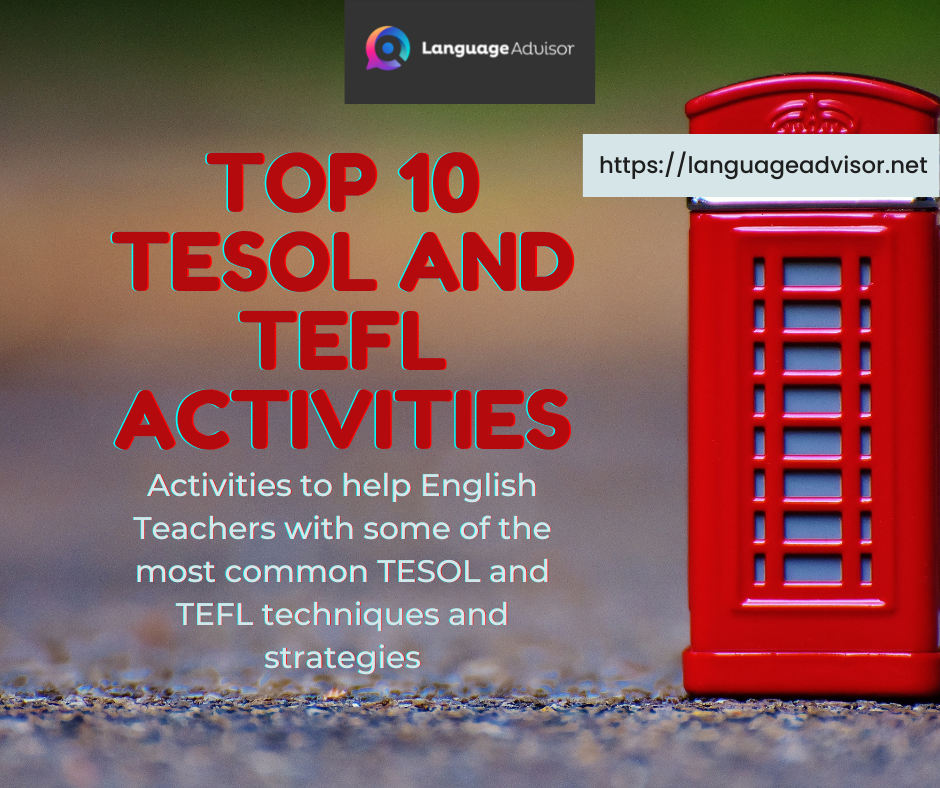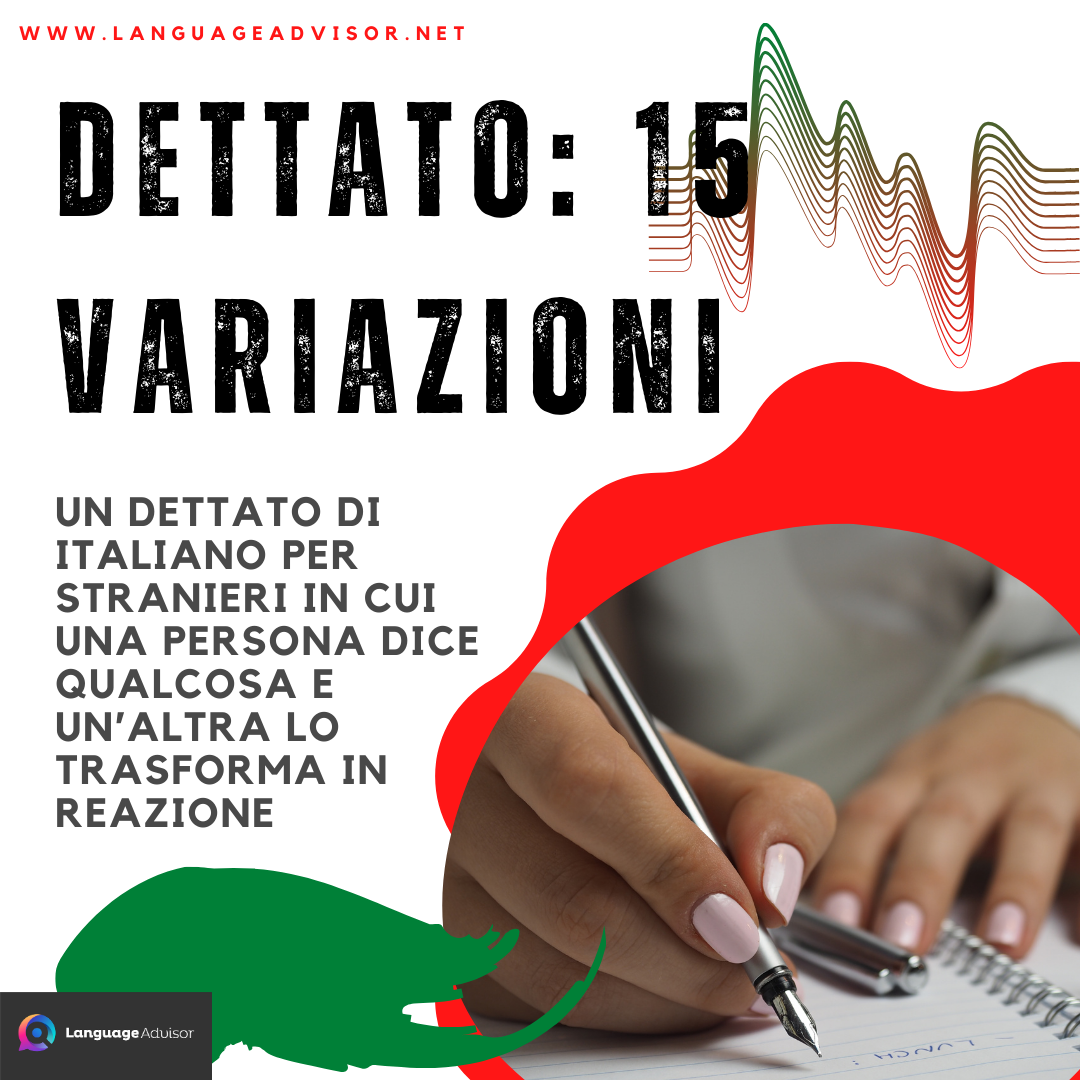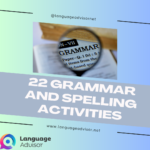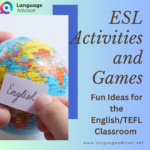Top 10 Tesol and Tefl Activities. Activities to help English Teachers with some of the most common TESOL and TEFL techniques and strategies.
Top 10 Tesol and Tefl Activities
Top 10 Tesol and Tefl Activities. Activities to help English Teachers with some of the most common TESOL and TEFL techniques and strategies.
Top 10 Tesol and Tefl Activities
The most common activities in the modern classroom are quite different from those of a generation ago. As the communicative approach has grown in both research and pedagogical approach, teachers have continued to discover ways to make the classroom a place of excitement and learning.
The following activities were chosen not only because they are common to the field but because they elicit the kinds of language production that communicative teachers are looking for. These activities tend to cross over the range of student possibilities, meaning that activities can be adapted for all students, from beginning to advanced, and from children to adults.
This does not mean that every activity is necessarily an appropriate activity in the context that you find yourself. However, by reading through these activities, you are encouraged to explore how you might use and modify at least some of these activities so that you are more successful in your English classroom.
I’m more interested in arousing enthusiasm in kids than in teaching the facts. The facts may change, but that enthusiasm for exploring the world will remain with them the rest of their lives
~
Seymour Simon

Top 10 Tesol and Tefl Activities
Here is a list of 10 Top 10 Tesol and Tefl activities that will help you teach English and keep your students engaged.
Information Gap

Description
An information gap activity uses as its premise the idea that one person or group of people has information that others do not have. Thus, the point of an information gap activity is to have people interact with each other in an attempt to find all the “missing” information.
Here is a simple example.
A teacher assigns 10 questions on a piece of paper to student A. Student B is not allowed to view this paper. In contrast, student B is given an article that contains all of the answers to the 10 questions,but student A is not allowed to view the article. Thus, for students to successfully answer all the questions, Student A must ask Student B the questions, and Student B must report those answers to Student A.
For example, particular information gap activities are:
I’m Looking for Someone Who…
Interaction Lines
Back to Back Information Gap
Headbands
Reading with Half the Words

Classic Jigsaw

Description
Jigsaw is a common TESOL reading activity. There are many variations, but in a classic jigsaw, a teacher divides a classroom into four groups (A, B, C, and D).
A reading is also divided into four, with one part for each group (so group A reads Part A). The students in each group must read and take notes on each part of the reading. After each group has finished reading the assigned section, students form new groups, with one member from each original group represented (meaning a member of A, B, C, and D all sit down together).
Students now report information to the members of the new group, and every student should take notes on each section of the reading. This gives students a chance to serve both as a reader, a speaker, and a listener, which naturally encourages interaction. Generally, teachers provide questions that the final group must answer, and should monitor each group to provide guidance and answer questions.

Cloze Passage Exercise

Description
The word “cloze” is TESOL jargon meaning “fill in the blank” or “missing information.” A cloze passage generally has missing words or phrases in the form of a space (____). Students listen to an audio clip, either recorded or spoken, and attempt to fill in the blank with the missing information.
The cloze passage is a popular TESOL activity because it gives students an opportunity to listen to a popular song, conversation, or topic that uses authentic language students can identify with.
Teachers often hand out a sheet or use an overhead with some of the words removed or altered. The students then listen to the audio and attempt to complete the missing words. A word bank may be provided, and the audio is generally listened to more than one time. Students are then asked to offer the answers that they heard, either individually or in groups. Students in advanced levels can even create cloze passages themselves and, for example, share favorite songs.
Top 10 Tesol and Tefl Activities
Here is an example PDF worksheet

Journals

Description
Journals are certainly not exclusive to TESOL teachers, but are a powerful way to allow students to communicate at their own speed and comfort, and in a creative and original way.
A journal can allow students to express their own opinions, daily habits, lifestyle, tastes and preferences, and so forth. Journals are particularly successful at helping students open up to language as a real opportunity to share ideas, engage in critical thinking, or demonstrate a particular language function (For example, if you wanted learners to use the past tense, you could use the prompt, “Write about a past experience that…”). Journals are usually collected regularly (once a day, twice a week, once a week), and while there is a variety of debate on the matter, a number of teachers find that journals are a time to allow students to explore their ideas rather than to express ideas perfectly. In this light, journals are sometimes not graded in terms of grammatical accuracy, but rather in terms of content. Conversely, other teachers use journals as a way of measuring language output, and students are given writing prompts that reflect accuracy as well as content (Example: Write a paragraph that uses the past perfect. Use vocabulary from the following list.)
Those who focus on form should have explicit instructions.


Dictation
Description
Dictation may or may not seem like a communicative activity. Dictation can simply mean, “Write down exactly what I say,” and for some teachers, this may seem like an audiolingual or rote-memorization technique. However, dictation activities are often still used today to help introduce students to new vocabulary or ideas, and can help students to practice their listening skills. It also can give students a chance to interact if done in groups.
For example, a dictation exercise can be done by instructing students to take out a piece of paper and have a pen or pencil ready. The teacher repeats the utterance (a word, phrase, sentence, or paragraph) a specific number of times.
After students are done writing, each student can confer with a partner or group, and then they can raise their hand to add a word they heard until the sentence is completely written.
Another interactive version of dictation would divide a class into teams, and each would choose a team captain to write down what was heard. The winner would be the group with the fewest initial mistakes.
Here are some dictations you can find on Language Advisor

Modified TPR

Description
TPR, or Total Physical Response, was a method of instruction created by James
Asher that allowed students to learn language through a chronological event
filled with gesture and movement, and gave learners a chance to be silent while observing language.
While few teachers today follow each of the techniques used in this method, a number of communicative teachers still use some of the techniques commonly recognized as TPR. Today teachers continue to use elements of TPR especially when helping students build vocabulary. In short, TPR can be a great way to teach a list of vocabulary words, especially those associated with a pre-reading or listening activity. Here is a possible activity that uses TPR principles:
1) The instructor gives new vocabulary (usually two or three words at a time) and demonstrates actions that help to determine the meaning of the vocabulary.
(For example, a teacher says the phrase “In the morning” and then shows a sun climbing from behind a desk.)
2) The instructor delays modeling, using the time between the narrative and the students’ reaction to assess how much more demonstration is needed.
3) Once the students are reacting to the “story” without hesitation and with no actions, the instructor moves on to three or more new words but continues to use (recycle) the previous phrases (For example, “In the morning, I woke up,” and then later, “In the morning, I woke up, brushed my teeth, and put on clothes.”).
4) The teacher starts to “scramble” the vocabulary, meaning that the instructorpresents unexpected combinations of the newly introduced vocabulary. The teacher then gives commands with that vocabulary that the students will use (For example, “Pablo: wake up! Susan: brush your teeth!”).
5) The teacher will continue to address different students, varying between different individuals.
6) The teacher then assesses how well the students remember the actions, possibly by having students perform the actions themselves with their eyes closed. (For example, a teacher might say, “Close your eyes. Now, brush your teeth!” and see if students can pantomime brushing teeth.)
While perhaps not a communicative activity in the traditional sense, certainly students are learning to comprehend language and associate it with actions and objects in the real world. To put a communicative spin on it, you might ask students to “be the teacher” and give commands in groups. Or you might ask students to create their own TPR stories and teach vocabulary they are learning.


How to Make a Group
Think-Pair-Square-Share and “Assignments”
Description
Communication in a classroom requires teachers to think of ways to divide
students into groups. For example, some teachers have students respond to nearly any question using the phrase, “think, pair, square, share.”
Think: Students are asked to think quietly about a question.
Pair: Students respond to the question in pairs.
Square: Students respond to the question in small groups (four or more, a “square”)
Share: Students respond to the teacher, either by electing a spokesperson or simply by being called upon.
While the think-pair-square-share paradigm works for questions, it is less successful at engaging students in projects or larger assignments. For larger tasks, one of the most successful ways to group students in a class is by giving each student a different assignment. In this activity, a teacher assigns students within a group of three or four to a particular position of authority within the group. The positions might include the “leader” (the person who reads the instructions or gets the instructions from the teacher), “secretary” (the student who takes notes for the group), and “reporter” (the person that reports findings to another group or to the entire class)

Talking Tokens/Throw the Ball

Description
Many teachers struggle to have students participate in class. One way to encourage speaking is to have students grab a number of tokens.
A token could be a small coin, a marble, a piece of candy, or any sort of small item that can be quickly passed out. Each token stands for the amount of times a student will be required to speak.
This tends to encourage students to participate and tends to stop those few students who may answer all the questions. You can explain to your learners that as soon as their tokens run out, they are required to listen to other learners.
Another common variation requires some dexterity, and that is to have a number of bean bags, footballs, or other object to throw in class. A teacher throws the object to a student after a question is asked. Then the student answers the question and throws the ball back to the teacher. Alternatively, students could stand in a circle and throw the ball to each other. Whoever catches the ball must answer the question. This keeps students at attention and allows for more interaction.

Read Aloud or Reading Circles

Description
The basic concept behind a read
aloud is to give learners the chance to comprehend a reading by having it spokenout loud either by the teacher, or with a partner or small group.
Read aloud activities give opportunities for a teacher to teach different learners a variety of strategies for reading, listening, and speaking. Before a read aloud, learners may be given a sheet of questions to answer, a list of vocabulary words to look for, or
another language task.
Here are some tips for a successful teacher-directed read aloud:
a) Choose a story that students love or relate to
b) Stand in front of the class and have every student open to the same page
c) Read in a dynamic voice
d) Pause often and stimulate interest by asking students to predict
e) Have students read along to various parts, especially exciting or interesting parts
f) If possible, watch a movie clip version after you have read a particular chapter.
Within the technique of reading aloud are a number of excellent teacher techniques.
Consider using several of the following each time you do a read aloud:
• Choral Reading – all participants read out loud and all together
• One by One and Sentence by Sentence – each person reads a sentence
• Dramatic Reading – focus on emotions and feelings
• Physical Response Reading – describe and act out physical actions and movements
• Paired Reading – each partner reads one sentence and the partners alternate reading
• The Leader and The Choral Response – the leader reads one sentence and then the large group echoes back that sentence and then alternate back and forth between the leader and the group
reading a sentence out loud
• Small Group Reading – create small groups and each student reads a sentence in a circle
• Male and Female Roles or Turns – all the women read one sentence and then the men read the next or take turns reading the dialog for women and for men
• Fill in the Missing/Silent Words – the leader reads out loud and pauses in the sentence for the group to fill in the words that are the focus of vocabulary or pronunciation practice
• Silent Reading – everyone reads a paragraph or page silently and then questions are asked about the reading or vocabulary, etc.
• Listen and Read – participants watch part of the movie and then read the same portion of the story in the book.
• Read and Listen – participants read a passage in the book and then review the same part in the movie.
• Read and Discuss – the leader can ask questions about the reading or how theparticipants feel about a topic or idea presented in the book or movie.
• Read and Write – participants can write book reports or short essays in a class environment

Turn ANYTHING into an English Activity

Description
The idea is that any item – even a picture of an apple – naturally invites students to produce language. When given objects or videos, basic students generally describe what they see, while at more advanced levels, students might make inferences or share opinions about the item.
In general, when a teacher finds an interesting item for students to look at or think about, teachers can use reading, writing, listening,
or speaking activities to support it.
The website http://www.breakingnewsenglish.com, for example, turns a typical news article into a huge number of opportunities to learn English. The website offers reading, writing, listening, speaking, pronunciation, and vocabulary activities that all support a single article.
Here are some simple in-class suggestions:
Writing: You can invite students to write down as many words as possible based on the item, or perhaps create a story based on the item, or craft questionsfor other students to answer about the item.
Reading: You can invite students to do a web search about the item, or the teacher can prepare a reading that explains information about it. A jigsaw or information gap activity can often be created based on any reading the teacher prepares.
Listening: You can ask students to listen to a short passage based on a picture, video, or reading, or, if using a video, perform a cloze passage exercise. Alternatively, students can listen to other learners in the classroom discuss the object.
Speaking: You can invite students to make predictions from a video, or make inferences about an object. You can create a series of questions that students can respond to individually, in pairs or in groups.
Anything can be an opportunity to teach English.

Top 10 Tesol and Tefl Activities
Here are some other activities you can find on Language Advisor














